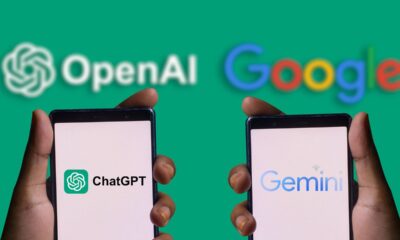Science
OpenAI Sets Bold Path to Autonomous AI Researchers by 2028

OpenAI is charting a bold course towards the future of artificial intelligence, with a vision that includes fully autonomous AI researchers by 2028. During a recent event, CEO Sam Altman announced plans for the company’s AI models to evolve into systems resembling “research interns” by next year. These models are expected to assist in complex tasks with minimal oversight, marking a significant step in the development of AI capabilities.
Altman’s ambitious roadmap suggests that this progression will ultimately lead to AI systems that can independently drive scientific breakthroughs, potentially revolutionizing various fields. According to a report from TechRadar, Altman envisions a future where artificial general intelligence (AGI) goes beyond responding to queries to actively contributing to creative and analytical processes. This vision aligns with OpenAI’s broader reorganization efforts, which aim to enhance safety and infrastructure alongside rapid technological advancements.
Transformative Milestones and Infrastructure Investments
OpenAI’s timeline is ambitious, focusing on several key milestones. By 2026, the company aims to develop AI that can harness vast computing resources for internal research acceleration. The ultimate goal for 2028 is to enable these systems to autonomously manage large-scale projects, which could have profound implications in areas such as drug discovery and climate modeling. Achieving this vision will require substantial infrastructure investments, estimated at $1.4 trillion, to meet the computational needs of advanced AI systems.
Despite these aspirations, industry experts have raised concerns regarding the feasibility of such ambitious goals. While OpenAI has demonstrated progress with models like GPT-4, achieving full autonomy necessitates significant advancements in reasoning and reliability. Altman acknowledged the challenges ahead, particularly the need for improved “test time compute,” which involves allowing models to deliberate longer on problems to enhance accuracy.
Strategic Restructuring and Collaborations
As part of its strategy to achieve these goals, OpenAI is restructuring to adopt a public benefit corporation model, aiming to balance profit with societal impact. This information was detailed in coverage by The Decoder, highlighting the extension of partnerships with Microsoft through 2032 and collaborations with PayPal to facilitate AI-driven payment systems. Chief Scientist Jakub Pachocki emphasized that maintaining safety remains a top priority, with new protocols being implemented to mitigate risks as AI models gain greater independence.
Nevertheless, some critics warn against the potential for overoptimism regarding the timeline for achieving AGI. A former OpenAI researcher, as reported by The Neuron, suggested that while AGI could be realized by 2027, current limitations in hardware and data efficiency must be addressed. OpenAI’s strategy relies heavily on algorithmic innovations to bridge these gaps.
The roadmap laid out by OpenAI signifies a shift towards AI as an active participant in the innovation landscape. This evolution could disrupt traditional research methods, prompting competitors like Google and Anthropic to accelerate their own AI initiatives. Furthermore, OpenAI’s emphasis on “personal AGI” has the potential to democratize access to AI technologies, allowing individuals to utilize AI for tailored problem-solving.
While the future of autonomous AI researchers appears promising, it is essential to maintain a vigilant approach. Achieving these ambitious goals by 2028 will require not only technical expertise but also robust frameworks that align these advancements with human values. Altman remains optimistic, framing this endeavor as a transformative leap that could lead to unprecedented discoveries, provided that the challenges are navigated wisely.
-

 Technology5 months ago
Technology5 months agoDiscover the Top 10 Calorie Counting Apps of 2025
-

 Technology2 weeks ago
Technology2 weeks agoOpenAI to Implement Age Verification for ChatGPT by December 2025
-

 Health3 months ago
Health3 months agoBella Hadid Shares Health Update After Treatment for Lyme Disease
-

 Health3 months ago
Health3 months agoErin Bates Shares Recovery Update Following Sepsis Complications
-

 Health3 months ago
Health3 months agoAnalysts Project Stronger Growth for Apple’s iPhone 17 Lineup
-

 Technology4 months ago
Technology4 months agoDiscover How to Reverse Image Search Using ChatGPT Effortlessly
-

 Technology3 months ago
Technology3 months agoElectric Moto Influencer Surronster Arrested in Tijuana
-

 Technology2 months ago
Technology2 months agoDiscover 2025’s Top GPUs for Exceptional 4K Gaming Performance
-

 Technology5 months ago
Technology5 months agoMeta Initiates $60B AI Data Center Expansion, Starting in Ohio
-

 Technology5 months ago
Technology5 months agoRecovering a Suspended TikTok Account: A Step-by-Step Guide
-

 Health5 months ago
Health5 months agoTested: Rab Firewall Mountain Jacket Survives Harsh Conditions
-

 Lifestyle5 months ago
Lifestyle5 months agoBelton Family Reunites After Daughter Survives Hill Country Floods



















